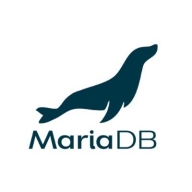

MariaDB and Faiss cater to distinct areas in database management and machine learning, respectively. While MariaDB offers a traditional approach with high availability and replication features suited for enterprises, Faiss provides advanced similarity search capabilities for large datasets, making it advantageous for machine learning applications.
Features: MariaDB provides high availability, replication, and MySQL compatibility, supporting enterprise-level applications. Faiss specializes in searching high-dimensional vectors, GPU acceleration, and clustering capabilities, targeting machine learning needs.
Ease of Deployment and Customer Service: MariaDB offers straightforward deployment with comprehensive documentation, making it accessible to various businesses. Faiss requires more specialized knowledge for setup, suitable for tech-savvy teams, though customer service is limited.
Pricing and ROI: MariaDB offers attractive pricing with low initial setup costs, making it a cost-effective database solution. Faiss, although requiring potentially higher initial investment due to its technical nature, delivers significant ROI for projects involving rapid vector search.
| Product | Market Share (%) |
|---|---|
| MariaDB | 6.7% |
| Faiss | 3.6% |
| Other | 89.7% |


| Company Size | Count |
|---|---|
| Small Business | 27 |
| Midsize Enterprise | 12 |
| Large Enterprise | 25 |
Faiss is a powerful library for efficient similarity search and nearest neighbor retrieval in large-scale datasets. It is widely used in image and text processing, recommendation systems, and natural language processing.
Users appreciate its speed, scalability, and ability to handle high-dimensional data effectively. Faiss also offers easy integration and extensive support for different programming languages.
Its valuable features include efficient search capabilities, support for large-scale datasets, various similarity measures, easy integration, and comprehensive documentation and community support.
MariaDB is an open source relational database created by the original founders of MySQL. It is considered one of the most popular and trusted database servers throughout the world. MariaDB is a valued component found in most cloud offerings and is the default in many Linux tools. It is also widely used by Wikipedia, WordPress, and Google, among other well-known sites. Maria DB easily melds data into concise information from a vast array of applications, such as banking, online shopping, websites, and more.
MariaDB was originally created to improve MySQL performance. It is the most widely chosen database server due to the solution being super fast, robust, user-friendly, and easily scalable. MariaDB also offers a substantial ecosystem of plugins, storage engines, and numerous other valuable tools that make it very attractive for a significant offering of use cases.
The solution’s newest functionalities include compatibility with Oracle Database and Temporal Data Tables, and advanced clustering with Galera Cluster 4, which make it easier for users to research data history from any point in the past. Additionally, the most recent versions include JSON and GIS features. MariaDB is committed to staying an open source solution.
MariaDB Features
Reviews from Real Users
Faustine C., Engineering Supervisor- Corporate Data Solutions and Services at TZ Telecoms Corporation, shares, “The software provides a lot of information on what is happening inside the database. For most performance parameters it is easy to know if something is not right in the configuration or optimization which helps engineers take remedial fine-tuning measures. For example, if the database is underperforming it is easy to know which performance parameter can be adjusted to handle the workload. It is difficult to troubleshoot database issues if many performance parameters can not be monitored or debugged which is the case with some database management systems. It provides great monitoring of data storage, processing, and performance stability which is really important for real-time data storage and processing. It's a user-friendly product.”
A PeerSpot user who is a Senior Engineer at a tech services company relates, “ The solution's high availability is its most valuable aspect. We have found the product to be stable and the initial setup is pretty simple. I'd rate the solution at a ten out of ten. I'm very happy with it overall. I would recommend the solution to others. It's easy to find details about the product online and to learn about it.”
We monitor all Open Source Databases reviews to prevent fraudulent reviews and keep review quality high. We do not post reviews by company employees or direct competitors. We validate each review for authenticity via cross-reference with LinkedIn, and personal follow-up with the reviewer when necessary.